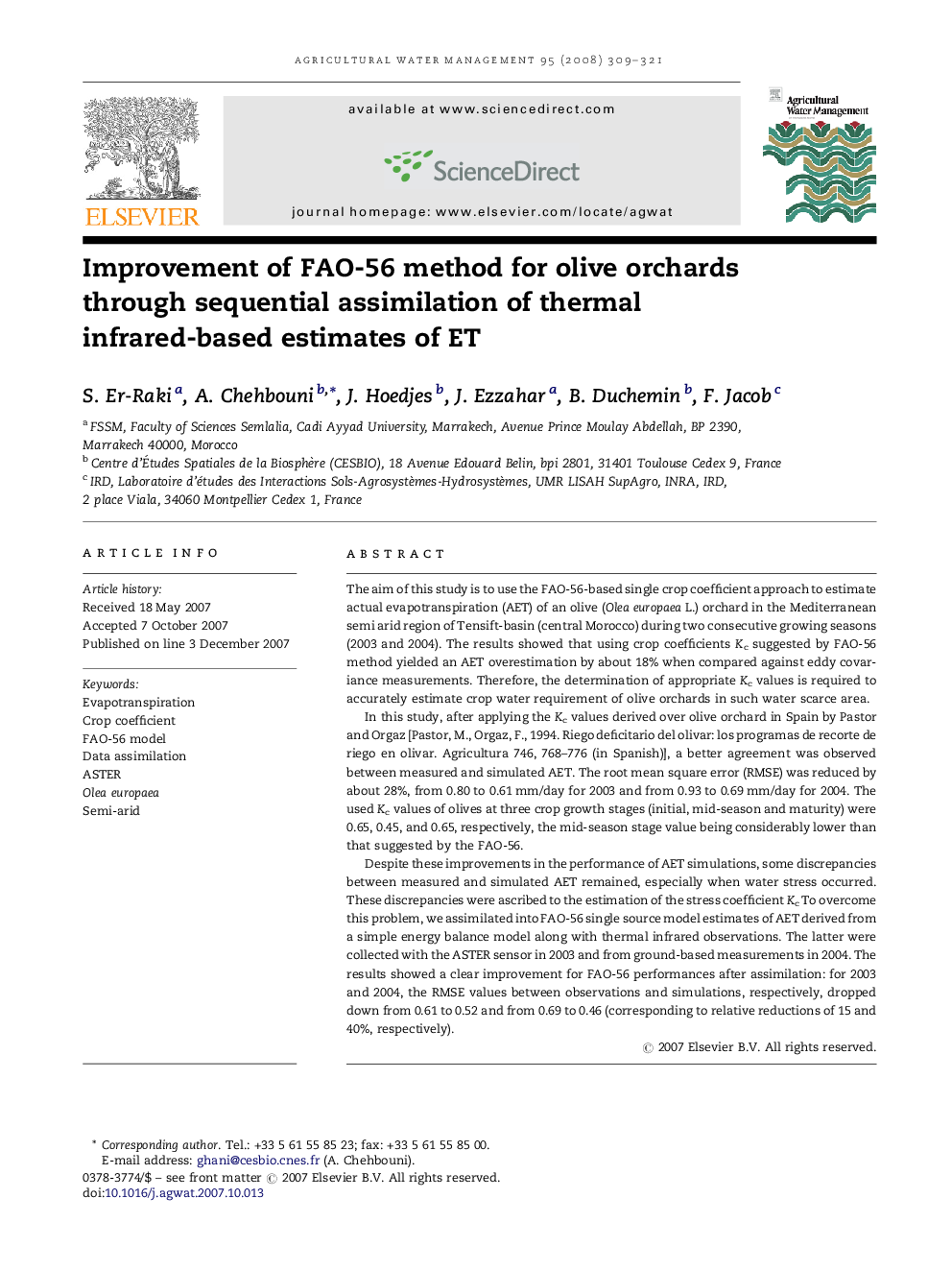| کد مقاله | کد نشریه | سال انتشار | مقاله انگلیسی | نسخه تمام متن |
|---|---|---|---|---|
| 4480279 | 1316483 | 2008 | 13 صفحه PDF | دانلود رایگان |

The aim of this study is to use the FAO-56-based single crop coefficient approach to estimate actual evapotranspiration (AET) of an olive (Olea europaea L.) orchard in the Mediterranean semi arid region of Tensift-basin (central Morocco) during two consecutive growing seasons (2003 and 2004). The results showed that using crop coefficients Kc suggested by FAO-56 method yielded an AET overestimation by about 18% when compared against eddy covariance measurements. Therefore, the determination of appropriate Kc values is required to accurately estimate crop water requirement of olive orchards in such water scarce area.In this study, after applying the Kc values derived over olive orchard in Spain by Pastor and Orgaz [Pastor, M., Orgaz, F., 1994. Riego deficitario del olivar: los programas de recorte de riego en olivar. Agricultura 746, 768–776 (in Spanish)], a better agreement was observed between measured and simulated AET. The root mean square error (RMSE) was reduced by about 28%, from 0.80 to 0.61 mm/day for 2003 and from 0.93 to 0.69 mm/day for 2004. The used Kc values of olives at three crop growth stages (initial, mid-season and maturity) were 0.65, 0.45, and 0.65, respectively, the mid-season stage value being considerably lower than that suggested by the FAO-56.Despite these improvements in the performance of AET simulations, some discrepancies between measured and simulated AET remained, especially when water stress occurred. These discrepancies were ascribed to the estimation of the stress coefficient Kc To overcome this problem, we assimilated into FAO-56 single source model estimates of AET derived from a simple energy balance model along with thermal infrared observations. The latter were collected with the ASTER sensor in 2003 and from ground-based measurements in 2004. The results showed a clear improvement for FAO-56 performances after assimilation: for 2003 and 2004, the RMSE values between observations and simulations, respectively, dropped down from 0.61 to 0.52 and from 0.69 to 0.46 (corresponding to relative reductions of 15 and 40%, respectively).
Journal: Agricultural Water Management - Volume 95, Issue 3, March 2008, Pages 309–321